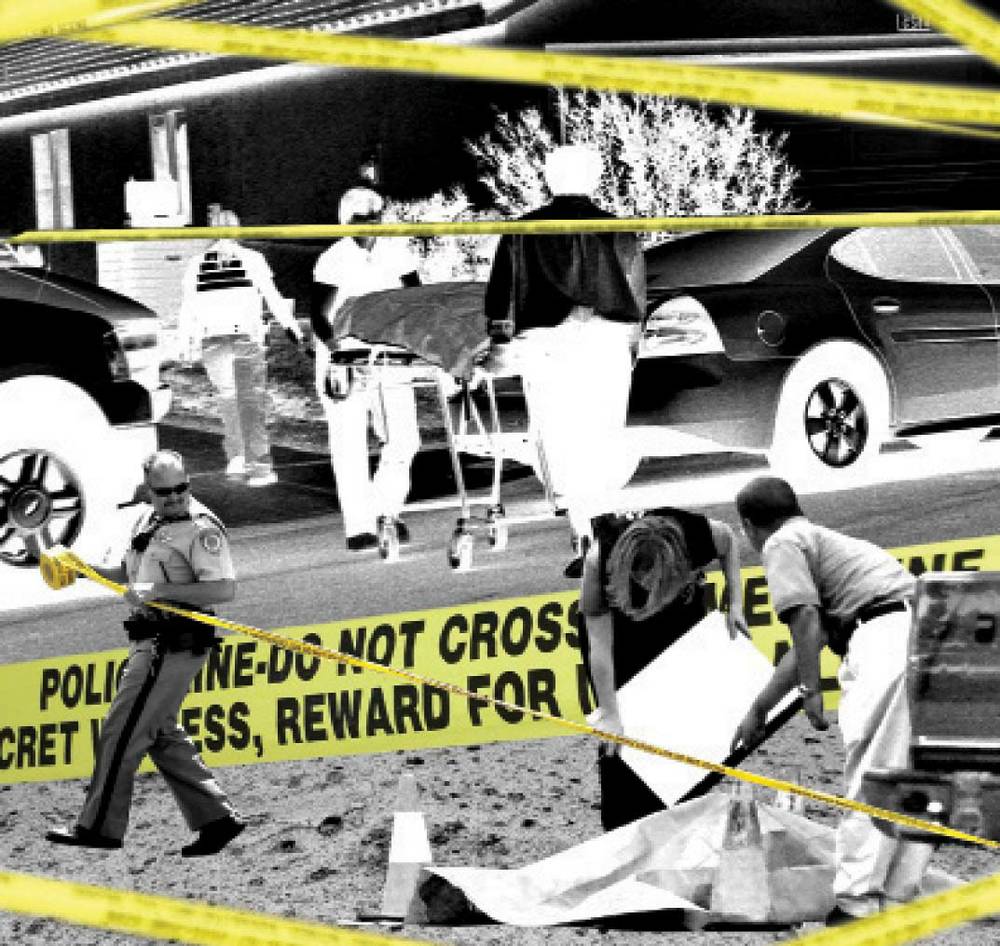Red state. Blue state. Liberals. Conservatives. Wall Street. Main Street. We like our divisions in the United States. It helps to give us the illusion of safety, that things can be defined and contained. But few divisions count for more than the ones between city and suburb. Even in Las Vegas, where the division between the two is far less pronounced than in other cities, this line persists.
Once the line gets drawn, it’s easy to misrepresent the people—the life—on the other side. The suburbs are boring. The central city is exciting. The suburbs are safe. The central city is not. It’s easy to associate “types” with each group: salt-of-the-earth middle-classers holding down the ’burbs, hip bohemians establishing themselves Downtown.
But a look at Metro’s year-to-date homicide stats reveals that simple lines rarely help describe reality. How skewed is our perception? Would it interest you to know that, when it comes to murder rates, there’s little separating Downtown from Summerlin?
Through last week, Metro has recorded 86 homicides in 2009. (This slightly trails the rate from 2008.) But if you expected that most of them were in the heart of the Valley, think again: They are spread fairly evenly throughout the city.
For one, it turns out there has only been one homicide in Downtown thus far—an area we at Weekly bounded by Charleston, Maryland Parkway, Interstate 15 and U.S. 95. Expanding the boundaries out a little farther—to Rancho on the west, Owens to the north, Eastern to the east and Sahara to the south—increases the murder count by six. (This larger area includes West Las Vegas and the blocks near Luv-It Frozen Custard by the Stratosphere, a stretch of the city TV star Mindy Kaling recently dismissed as “sketchy.”) If you stretch the boundaries by a few blocks you can include two homicides just west of Rancho near Charleston, and two more just east of Eastern near Boulder Highway.
The combined population of the zip codes that correspond with these areas—89101, 89104 and 89106—was 117,089 in 2008, which translates, roughly speaking, to one murder for every 10,644 residents.
So how have the suburbs fared? Unexpectedly, there have been two murders in the far northwest end of the city, near Floyd Lamb State Park—a vision of suburban contentment if ever there was one in the desert. The 2008 population of this quarter of Las Vegas, roughly 43,201, means there’s about one murder for every 21,600 residents. There have been four murders in or close to Summerlin.
Still, most of the Valley’s murders are fairly evenly spread out between communities east of 15 and those to the west. Of the 86 homicides, the Weekly found locations for 83—almost 40 percent were located west of I-15. The rest, not including the 11 murders in or around Downtown, were located across the east side of the Valley.
So what does this all mean? Not sure. Metro spokesman Bill Cassell was reluctant to read anything into the numbers, noting only that Metro’s “overall departmental philosophy is to attack the crimes that lead to homicide. That’s what we’re doing, and I think we’re doing it effectively.”
Still, if nothing else, the stats remind us that what separates us most from each other may be nothing more than a homeowners’ association and a guard gate.








Previous Discussion: